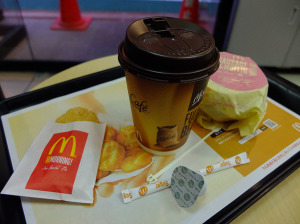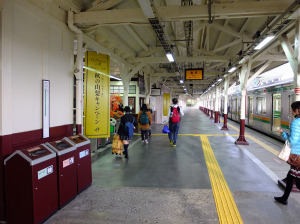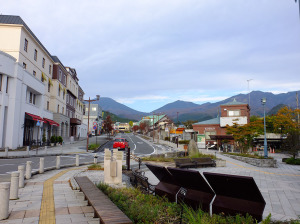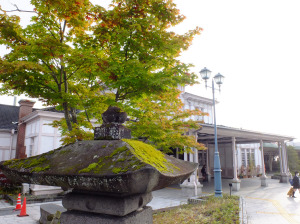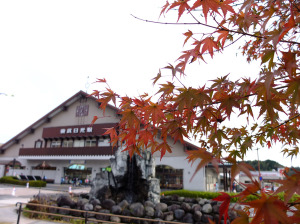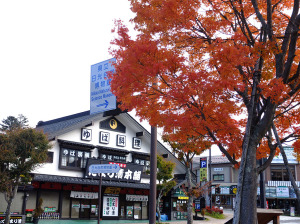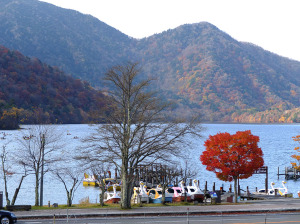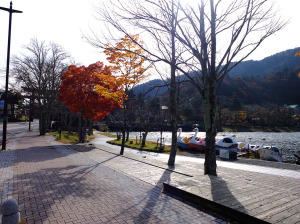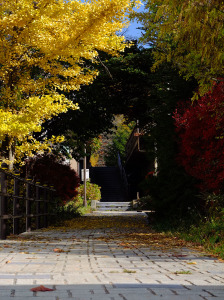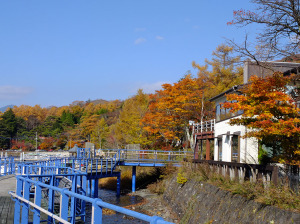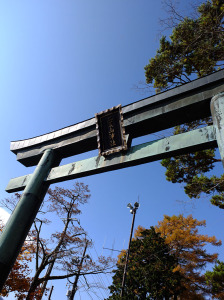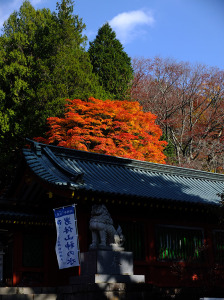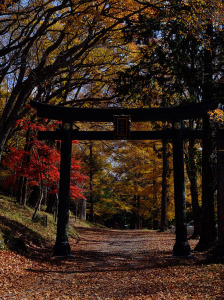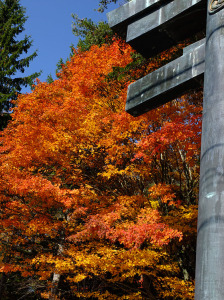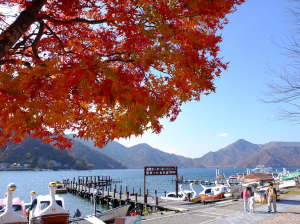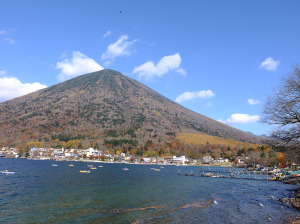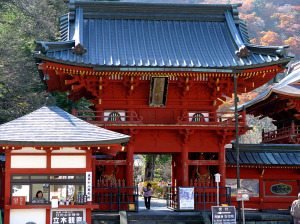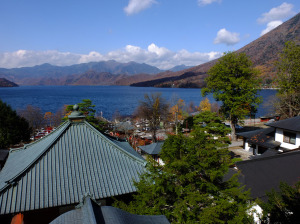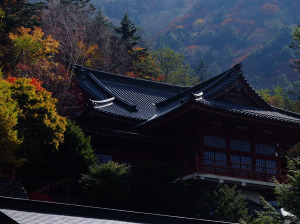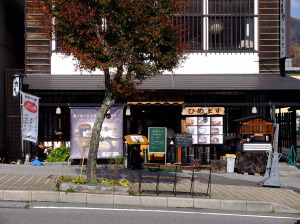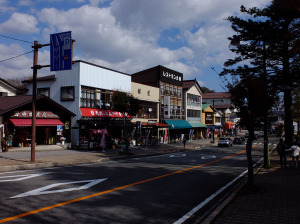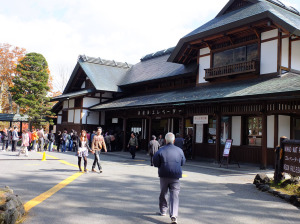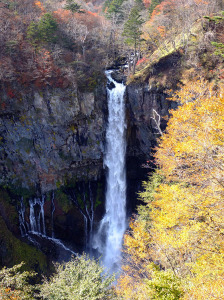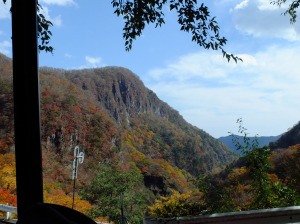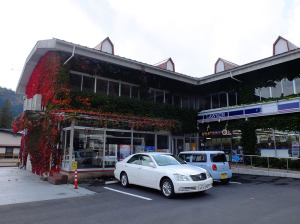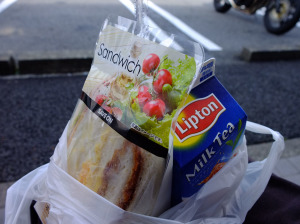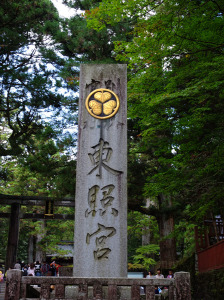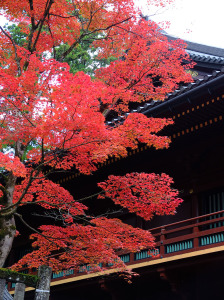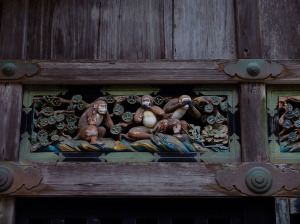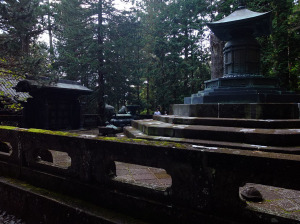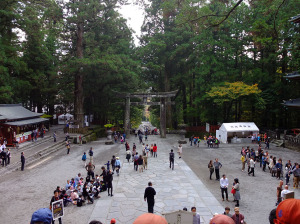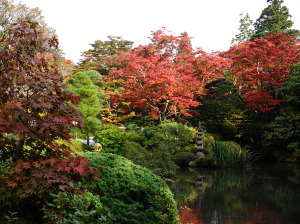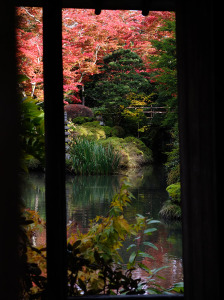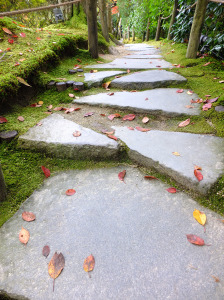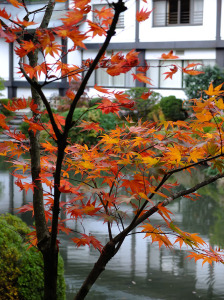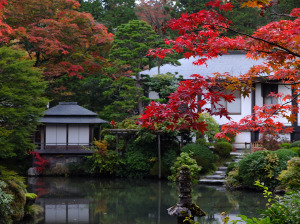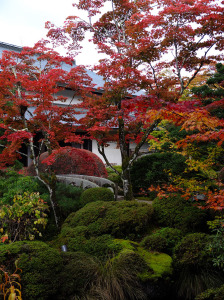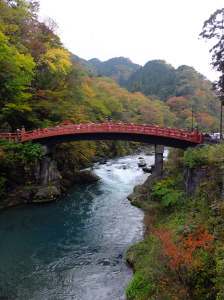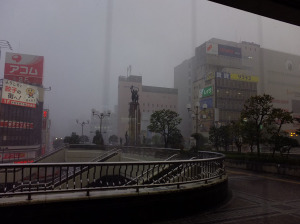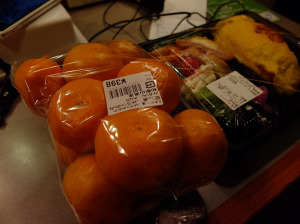For reason unknown, Japan is unreasonably hot. (Why is it so hot when the leaves are red early?) Even at night some light long sleeves are enough, it’s clear the hotel and other places didn’t catch the memo because they’re still using heaters.
Any case, I woke up early and have everything packed and ready by 6. I decided not to bring the heavy jacket (thank jebus), and instead brought just an extra long sleeve shirt in case things get a little chilly up in Nikko.
First thing to do is activate my sim card. The OCN Prepaid Sim is a 14 day data only card that costs 3750Y and gives you 100mb a day (throttles to 200kbps if over). Plenty for just checking webpages and google maps.
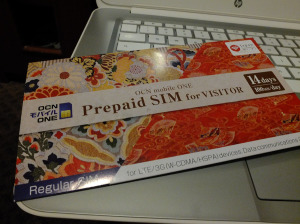
SIM Card. Actually had this bought in Taiwan since they got a retail partner, otherwise you can pre-order and pick up at the airport (hassle)
Breakfast is at… McDonalds, across the station front. The Mos Burger breakfast menu left me unimpressed. Oh why isn’t there a Doutor around?
I ate quickly, wary that the train leaves at 6:30, and only just makes it with coffee in hand. Off to Nikko we go.
The train is a standard commuter train with benches on either side. As we’re going against traffic there’s very few people on board. The train whistles down the rails with incredible speed. There’s only about 6 stations scattered over the 40km distance so the train can stay at top speed for periods.
40 min later the train arrives in Nikko. As there’s about 40min till the first bus there’s some time for me to get a bus pass and walk around.
I contemplated whether I should visit Toshogu first or go up to Chuzenji. Mostly a matter of timing and avoiding crowds. Going to Chuzenji first also means I’ll be travelling backwards, with the bus ride pass giving a good indication of distances between the points of interests.
I ends up going all the way up. Toshogu is within walking distance of the stations, it felt more prudent to leave them in the afternoon when timing can be more tight.
The road to Chuzenji includes a stretch of winding hairpin curves so tight the downhill traffic has to go through a different set of hairpin on the opposite side of the valley. The trees along the path was full of golden and red colours, but I found it very difficult to catch a shot on the ever turning bus and reflecting windows.
As the 2nd bus of the day, there’s not much tourists at the lakeside when we got there. It was only a little chilly and being in the morning, this was about as cold as it was going to get, I was glad I left my heavy jacket back at the hotel. Jackets can be surprisingly heavy.
I walked along the lakeside, first to the north, and truth be told was left somewhat disappointed.
There weren’t many trees along the lake front, even to the point of being barren. Neither scenic nor awe inspiring, much like the lakeside village, it felt manufactured, like everything was being made for tourists. Of course, everything at a tourist spot is for tourists, but some places are good at hiding it, making their sale fit in naturally with what the environment is.
Takayama (the historic districts specifically) is whole tourist purpose, but you do not feel being marketed at when you stand a midst its historic buildings. You have the sake breweries (which have always been in the area), the hida beef restaurants (but aren’t shouting at you with giant banners), tea shops and wood crafts (mountain town with history of woodcraft), all for the most part inconspicuous.
Then there are others that tries so hard to claim they’re special you’re left wondering if there’s anything behind the veneer (Kurashiki). There’s the canal, which you really should take a boat ride on (but not to get somewhere, actually it’s so short it barely counts as a stretch of river), there’s a lot of little trinkets shops, but don’t really seem to have a reason for being there. There’s plenty of restaurants, but no cohesion between them. There are cafes and teashops, and all so trendy. But together they felt more like a mall in the disguise of a historic area, as opposed to a historic area unveiling itself to you through its offerings.
Chuzenji unfortunately feels like the later. There’s a lot of swan boats rental, but what relation is it to the lake or its temples? There’s plenty of eateries with signs saying they specialize yuba (tofu skin) cuisines, because hey it’s the local food, but it felt the whole purpose of the motley rectangles of buildings is to sell you that yuba ramen, not something for you to enjoy and understand why you’d want that yuba ramen.
Maybe I’m being too harsh, and Takayama is also basically lined from end to end with stalls selling hida beef skewers and roasted rice pancakes, but those stalls does not feel out of place in those ancient wooden houses. Whatever it was, Chuzenji does not draw me in, it was just that, another spot to take some photos and say you’ve been.
I walked all the way to the Futarasan shrine. It’s a shrine dedicated to the Nantai mountain behind the shrine, overlooking Chuzenji. There’s 3 Futarasan shrines in Nikko, one down near Toshogu, one here by the lakeside, and the third atop the summit of Nantai mountain. From the lakeside shrine there’s a trail leading to the summit.
After touring the lakeside I head to the south banks to Chuzenji (the actually temple).
At Chuzenji temple the whole “you’re just being marketed to” feel really sinks in.
The temple caretakers ostensibly give you a tour of the temple, explaining its histories and developments, but then stops you from wandering off while he sells charms and incense to you.
It is so incredibly commercialized, so offensively sold that whatever history and grandeur that are within the halls and statues are lost.
I don’t mind places selling souvenirs, it’s a healthy relationship that shrines and temples should sell charms and fortunes and other extravaganzas in order to maintain its tradition and history, but when the entire purpose of you being there is so they can sell you a charm, the whole experienced is reduced to nothing but the stink of copper. There is no history to be shared, the history is just bait.
After Chuzenji temple I walk back to Chuzenji Onsen for a brief tour.
It’s about noon, I take the bus back down to Toshogu and gets off at Nishi-sando, the stop outside the western pilgrim path.
Before entering Toshogu I quickly grab some food at the nearby convenience store.
The feeling of too touristy and being treated like a cash cow continues after I descend down to Toshogu, and once again the caretakers have stalls set up right inside the halls of the temples.
I toured the complex, but I felt no closer to Tokugawa than I did before. Seeing his tomb gave me few thoughts of his achievements, his person. Just a constant river of tourists streaming by, commenting about the many steps they just climbed, or whether they have taken photos of the monkeys.
Toshogu is an impressive complex. As the resting place and place of worship of the deified shogun Tokugawa Ieyasu, the walls and ceilings decorated with gold and beautiful drawings.
Nearby are several other shrines and temples. Below Toshogu is the rinnoji houmotsuden garden, and this is where I get my first feel of autumn.
There were trees with red and gold leaves up in Chuzenji and Toshogu, but scattered and isolated. Here in the garden I first get to see whole rows of trees with autumn leaves. There were also not the crowd outside, just a handful of visitors that have also come off the beaten path.
A beautiful Japanese garden, with the buildings and trail that goes around a small pond all with the backdrop of the crimson leaves. I got some surprisingly good shots. The only shame is the leaves are not evenly coloured. Some are already orange while others still have a tint of green.
There’s meant to be a light up event here but they delayed the start time to 5pm and the weather was starting to turn. With a long way to go to get back to Utsunomiya, I ultimately to end the day early and head back.
Just as well, it means I will get back to Utsunomiya just after 6, right in time for dinner. Perhaps some dumplings?
Whatever plans I had however, it ended when I stepped off the train.
It was pouring, like a blanket of water fallen over the city and I could barely see across the overpass crossing the station front road. Thank goodness the hotel is just a wee bit further from the overpass such that a mad dash is within the realms of possibility.
But coming back out again for dinner? That’s not something I look forward to. I decided it was best to find food now and once I get back to the hotel to hole up. Utsunomiya station, like most Japanese stations, had its own arcade with restaurants and also where the supermarket was. I did a quick tour of the restaurants, rules each off as unappetizing, grabbed a supermarket’s bento and some mandarins and ran back to the hotel.
Gotta love supermarket bento, ever since doing it back in Matsue this has become a real option. Delicious, better variety and less oily than ramens, not to mention cheap.
Japanese dinner options are severely limited, choices are basically Isakeya (bar), ramen or semi-proper restaurant (>1000Y). Bentos give a real option, especially since I don’t put much value in trying out hottest must eat dishes.
